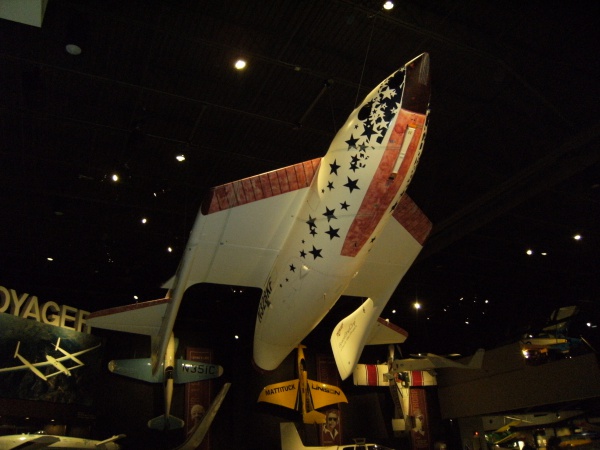Facts About SpaceShipOne
SpaceShipOne stands as a remarkable achievement in engineering, heralded as the first privately-funded, rocket-powered aircraft to reach sub-orbital space. It made history in 2004 by completing the first crewed private spaceflight. Conceived by Mojave Aerospace Ventures—a collaboration between tech magnate Paul Allen and aerospace company Scaled Composites—SpaceShipOne secured the prestigious Ansari X Prize before being retired after its triumphant missions.
One of SpaceShipOne's most notable features is its innovative "feathering" reentry system, which ensures a safe and controlled return to Earth. The spacecraft's design includes a pressurized cabin, a hybrid rocket motor, and aerodynamic control surfaces that enhance its maneuverability both in space and during reentry. It was launched from a specially designed carrier aircraft called "White Knight" which lifted it to high altitudes before release.
SpaceShipOne's journey involved reaching staggering speeds and altitudes, then gliding back to Earth for a smooth horizontal landing. The spacecraft's specifications, including its size, weight, and performance metrics, were meticulously engineered to accomplish its groundbreaking missions.
Winning the Ansari X Prize marked a monumental moment in the history of private spaceflight. SpaceShipOne achieved several milestones, such as surpassing Mach 2 and Mach 3 speeds and soaring to altitudes exceeding 100 kilometers. It also demonstrated the feasibility of reusable spacecraft, a significant advancement in space technology. Pilots like Mike Melvill, Brian Binnie, and Peter Siebold underwent extensive training to master flying this pioneering vehicle.
After its retirement, SpaceShipOne was enshrined at the Smithsonian National Air and Space Museum, where it continues to inspire future generations. Replicas of the spacecraft have been exhibited worldwide, showcasing its innovative design and technological breakthroughs.
The impact of SpaceShipOne extended beyond its missions. It laid the groundwork for subsequent projects like SpaceShipTwo and White Knight Two, integral to Virgin Galactic's ambitious plans to take passengers into space.

 Mexico
Mexico